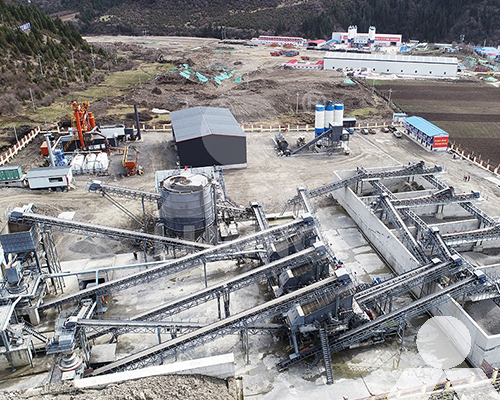Manufactured Sand Production Line for Construction
Manufactured sand is a type of sand that is made from crushed stone, gravel, or other materials. It is often used in construction because it is more uniform in size and shape than natural sand. This makes it easier to mix and use, and it also produces a stronger concrete.
Manufactured sand production lines are typically made up of the following components:
- Feeder: This device delivers the raw material to the crusher.
- Crusher: This device breaks down the raw material into smaller pieces.
- Screen: This device separates the crushed material into different size fractions.
- Washer: This device removes impurities from the sand.
The specific components of a manufactured sand production line will vary depending on the type of raw material being used and the desired specifications of the finished sand.
The manufacturing process for manufactured sand begins with the delivery of the raw material to the feeder. The feeder then delivers the material to the crusher, which breaks it down into smaller pieces. The crushed material is then screened to separate it into different size fractions. The desired size fraction of sand is then collected and washed to remove any impurities.

Manufactured sand production lines can be used to produce a variety of different types of sand, including:
- Fine sand: This type of sand is typically used in concrete and mortar.
- Medium sand: This type of sand is typically used in asphalt and concrete.
- Coarse sand: This type of sand is typically used in concrete, asphalt, and landscaping.
Manufactured sand is a versatile and cost-effective material that can be used in a variety of construction applications. It is a good alternative to natural sand, especially in areas where natural sand is scarce or expensive.
Advantages of manufactured sand
Manufactured sand has a number of advantages over natural sand, including:
- Uniformity: Manufactured sand is more uniform in size and shape than natural sand. This makes it easier to mix and use, and it also produces a stronger concrete.
- Cost-effectiveness: Manufactured sand is often less expensive than natural sand. This is because it is a more efficient way to produce sand.
- Sustainability: Manufactured sand can be made from recycled materials, such as concrete and asphalt. This helps to reduce waste and conserve natural resources.
Disadvantages of manufactured sand
Manufactured sand also has a few disadvantages, including:
- Transportation: Manufactured sand can be heavy and bulky to transport. This can add to the cost of construction projects.
- Regulations: In some jurisdictions, there are regulations governing the use of manufactured sand. These regulations may vary depending on the type of project and the location of the project.
Overall, manufactured sand is a versatile and cost-effective material that can be used in a variety of construction applications. It is a good alternative to natural sand, especially in areas where natural sand is scarce or expensive.









